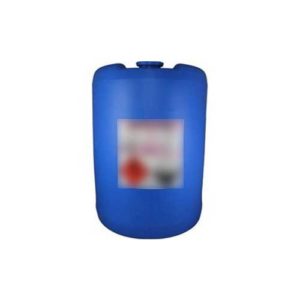ORTHO XYLENE-C8H10
ABOUT:
Ortho-xylene (o-xylene) is primarily produced by the catalytic reforming of petroleum naphtha or reformate, which is a mixture of hydrocarbons with 6 to 10 carbon atoms. The process involves the following steps:
Pre-treatment: The reformate is first pretreated to remove impurities such as sulfur, nitrogen, and other organic compounds that can poison the catalysts used in the reforming process.
Reforming: The pretreated reformate is then fed into a reactor vessel, where it is mixed with hydrogen and heated to high temperatures (500-600°C) under high pressure (10-30 atm) in the presence of a catalyst, usually composed of platinum, palladium, and/or rhenium. This process causes the hydrocarbons to undergo a series of chemical reactions, including dehydrogenation, isomerization, and cyclization, which result in the formation of o-xylene along with other aromatic hydrocarbons such as benzene, toluene, and meta-xylene.
Separation: The products of the reforming process are then separated using a series of distillation and fractionation steps to isolate o-xylene from the other aromatic hydrocarbons.
Purification: The isolated o-xylene is then purified further to remove any remaining impurities such as water and other trace organic compounds.
PHYSICAL PROPERTIES:
Molecular weight: 106.17 g/mol
Boiling point: 144.4°C (292°F)
Melting point: -25.2°C (-13.4°F)
Density: 0.88 g/cm³
Vapor pressure: 11.1 mmHg at 20°C (68°F)
Viscosity: 0.64 cP at 20°C (68°F)
Flash point: 29.4°C (85°F)
Autoignition temperature: 543°C (1009°F)
CHEMICAL PROPERTIES:
- Ortho-xylene is a reactive compound that can undergo a variety of chemical reactions, including halogenation, nitration, sulfonation, and oxidation.
- The aromatic ring in ortho-xylene has a weakly acidic hydrogen atom, which can be easily replaced by a strong base.
- Ortho-xylene can undergo polymerization reactions to form polyesters and polycarbonates.
- Ortho-xylene can be oxidized to form ortho-phthalic acid, which is used in the production of plastics.
- Ortho-xylene is highly flammable and can pose a fire hazard in certain conditions.
- Ortho-xylene is toxic when ingested or inhaled and can cause a range of health effects, including headache, dizziness, and respiratory irritation.
APPLICATIONS:
CHEMICAL MANUFACTURING:
- O-xylene is a key feedstock for the production of phthalic anhydride, which is used in the production of plastics, polyester resins, and other products.
- O-xylene is used to produce dimethyl terephthalate (DMT), which is used to make polyester fibers, films, and resins.
- As a curing agent for epoxy resins and in the creation of polyurethane coatings, o-xylene can be used to create o-xylene diamine (OXD).
AGRICULTURE INDUSTRY:
- O-xylene is a raw ingredient used to make several herbicides, including 2,4-D (2,4-dichlorophenoxyacetic acid) and MCPA (2-methyl-4-chlorophenoxyacetic acid).
- O-xylene is a raw ingredient used in the manufacture of several insecticides, including parathion and malathion.
- O-xylene is a raw ingredient used to make several fungicides, including benomyl and carbendazim.
LABORATORY:
- In the lab, O-xylene is employed as a solvent for organic processes. It is frequently employed in chemical reactions that demand high temperatures or yield water as a byproduct.
- For thin-layer chromatography (TLC) and other types of chromatography, o-xylene is employed as a non-polar solvent.
- Nuclear magnetic resonance (NMR) spectroscopy uses o-xylene as a reference material, and UV/Vis spectroscopy uses it as a solvent.
- To make tissue samples transparent and simpler to view under a microscope, o-xylene is used in microscopy as a clearing agent.
OIL AND GAS INDUSTRY:
- In the search for and production of oil and gas, o-xylene is employed as a tracer. It is injected into oil and gas reservoirs to help identify the reservoir’s flow patterns and properties.
- To help reduce the viscosity of the drilling mud and increase drilling efficiency, o-xylene is utilised as a component in drilling fluids.
- In the oil and gas sector, O-xylene is using O-xy, for the extraction and the industry uses O-xy. O-xy.
- In the oil and gas sector, o-xylene is utilised as a cleaning agent for pipelines. It can dissolve and eliminate numerous sorts of hydrocarbon deposits and pollutants.
RUBBER AND PLASTIC INDUSTRY:
- Tires, hoses, and other rubber products are made using SBR, which is created using o-xylene as a solvent.
- Polystyrene, which is used to make a variety of plastic items, including disposable cups, packaging materials, and toys, is produced using o-xylene as a feedstock and solvent.
- O-xylene is a feedstock used to create ABS resins, which are used to make a variety of plastic items, such as electrical and automobile parts.
- PVC, which is used to make a variety of plastic items, including pipes, wires, and packaging materials, is made using o-xylene as a feedstock and solvent.
PHARMACEUTICAL INDUSTRY:
- Many APIs, including certain antibiotics, antihistamines, and antidepressants, are produced using o-xylene as a solvent and intermediary.
- Some natural compounds used in pharmaceuticals, such as certain alkaloids and essential oils, are extracted using o-xylene as a solvent.
- A number of speciality compounds utilised in the pharmaceutical business, including several dyes and pigments, are synthesised from o-xylene as a starting ingredient.
- O-xylene is employed as a solvent in the purification of APIs in order to separate desired components from unwanted contaminants.
SAFETY MEASURES:
- Workers handling o-xylene should wear appropriate PPE, including gloves, protective clothing, and respirators.
- Proper ventilation is necessary when handling o-xylene to prevent the buildup of vapors in the work area.
- O-xylene should be stored in a cool, dry, well-ventilated area away from heat sources and incompatible materials.
- O-xylene should be handled with care, avoiding skin and eye contact, and avoiding ingestion and inhalation.
- In case of spills or leaks, workers should follow appropriate spill response procedures, including wearing appropriate PPE, containing the spill, and cleaning up the area using appropriate materials.
- O-xylene should be transported in appropriate containers, following proper labeling and documentation requirements.
- Workers handling o-xylene should be trained in its proper handling, storage, and disposal procedures.





Reviews
There are no reviews yet.